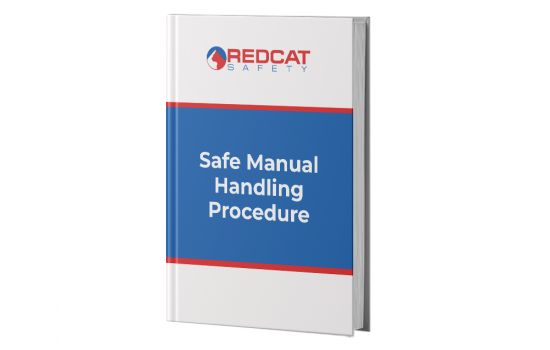What is Manual Handling Task?
A manual handling task refers to workplace activities requiring the use of force exerted by a person to move, lift, lower, pull, push, hold, grasp, manipulate, strike, throw, carry or restrain an object, load or body part.
What is Safe Manual Handling?
Safe manual handling refers to the correct way of lifting, pushing, pulling or carrying an object to avoid injury to yourself or the person you are helping. There are many ways to conduct safe manual handling tasks. Information on safe manual handling is extensive and covers a wide range of topics, however, generally, this information will focus on four key areas:
- Assessing the weight, shape and size of the load that is to be moved.
- The ability of the person(s) conducting the manual handling task.
- The importance of correct posture when conducting a manual handling task.
- The work environment where the manual handling task is being conducted.
Many workers are required to perform manual handling tasks as part of their job, and the risks associated with manual handling should be well documented and workers should be trained in safe manual handling procedures to avoid work-related musculoskeletal disorders.
Note: The best time to eliminate or minimize the risk of musculoskeletal disorders is in the design and planning stage. This is when hazards and risks can be ‘designed out’ before they are introduced into a workplace.
What is the Safe Lifting Weight for Manual Handling?
Advisory standards and codes do not prescribe absolute weight limits for lifting, lowering pushing, pulling or carrying loads. You will need to risk assess the duration and frequency of the hazardous manual task and apply the highest level of control practicable. The physical capabilities of each individual need to be considered, before attempting a manual handling task. No person should ever attempt to lift any heavy object beyond their lifting capacity. If lifting the object appears to be too heavy seek assistance or use a mechanical lifting device such as a pallet jack or forklift. It is always better to start with a smaller and lighter weight first.
A ‘typical’ workplace will require many different tasks, and a great deal of these will involve manual handling. It is therefore essential that a person’s musculoskeletal system be prepared for these situations to avoid manual handling injuries. Be sure to warm up, stretch and avoid sudden movements.
What are Safe Manual Handling Techniques?
The best way to avoid injuries when manual handling is to follow a few simple rules. First, always assess the load before attempting to lift it. Make sure it is not too heavy or too awkward to lift safely. If possible, ask for help. If you have to lift the load alone, be sure to use good lifting technique, adopt a stable position, keeping your back straight and your feet shoulder-width apart. Bend your knees and grip the load close to your body. Use your leg muscles, not your back, to lift the load. Avoid the risk of injury with awkward postures or by twisting your body while lifting. If you must turn, move your feet first, then your torso. Also, avoid lifting the heaviest side of a load first, that may increase the risk.
Contents of this Safe Manual Handling Procedure
- Approval.
- Purpose.
- Scope and Objectives.
- Terms and Definitions.
- Roles and Responsibilities.
- Procedures.
- Guidelines for Lifting and Good Posture.
- Manual Handling Equipment.
- Occupational Overuse Syndrome.
- Training and Supervision.
- Related Procedures, Forms and Documents.
- Review Criteria.
- Record Management.
- References.
Why Choose to Buy this Safe Manual Handling Procedure
This 9-page safe manual handling procedure template can provide you with practical guidance to identify hazardous manual tasks, assess the risk factors and determine appropriate health and safety control measures and avoid workplace injuries. This procedure’s focus is on activities requiring the use of force exerted by a person to lift, lower, push, pull, carry or otherwise move, hold or restrain any animate or inanimate object. This procedure’s guidance on how to manage the risk of musculoskeletal disorders arising from hazardous manual tasks in the workplace can be applied to all types of work where manual tasks are conducted.
After purchasing this template you will be able to:
- Very easily edit and customize the template to create your own procedure.
- Apply your own style, format and brand to the procedure.
- Use it in any industry or sector regardless of the size or type of organization.
Availability and Use of this Safe Manual Handling Procedure
- This procedure is accessible to you right now by clicking the ‘Buy Now’ button.
- The procedure will be delivered to you in fully editable Microsoft Word format for immediate and full use in your business.
- There are no subscriptions, contracts or ongoing costs.


